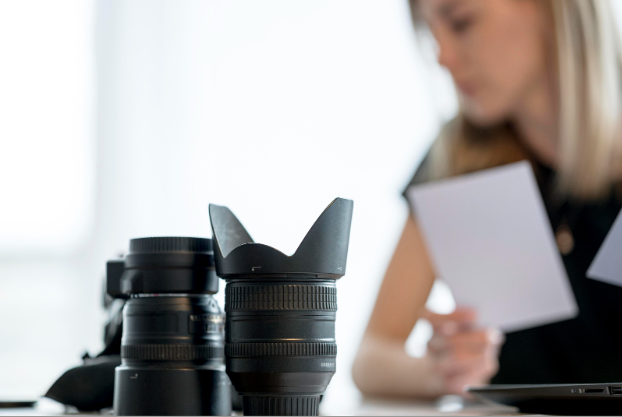As the e-commerce landscape becomes more visually driven than ever, product photography rates in 2025 reflect more than just a click of the camera—they reflect the value of branding, customer engagement, and content strategy. From global marketplaces to boutique online stores, the demand for crisp, clean, and compelling visuals continues to rise. But what exactly influences how much businesses pay for product photography today?
Understanding the key factors behind these rates can help brands make informed decisions, whether they’re working with a freelance photographer or a full-service studio.
1. Type and Complexity of the Product
One of the most obvious factors impacting photography rates is the type of product being photographed. Simpler items like books, electronics, or apparel require standard lighting setups and angles. On the other hand, complex products—like jewelry, glassware, reflective surfaces, or textured materials—require more nuanced lighting, background control, and retouching. These added complexities increase both shooting time and post-production effort, which naturally affects the price.
2. Number of Products and Shots
Volume is a major contributor to pricing. A single product with one angle is very different from photographing 50 items with multiple angles each (front, back, side, close-up, etc.). Many photographers offer tiered packages based on product count, with bulk pricing options for high volumes. Additionally, clients often request styled shots, lifestyle setups, or 360-degree photography—all of which add to the total number of required images.
3. Photography Style and Setup Requirements
The style of photography requested has a direct impact on pricing. White-background studio shots (standard for Amazon and similar platforms) cost less than styled lifestyle shoots, which require sets, props, and potentially models. Flat lays, floating product shots, and on-location shoots tend to be priced higher due to setup, teardown, and travel logistics.
The lighting setup also plays a big role. Natural light may be sufficient for some brands, but others demand complex artificial lighting rigs for consistent color accuracy and sharpness.
4. Post-Production and Editing Time
Editing is more than a polish—it’s part of the product’s story. Advanced retouching, color correction, background removal, shadow creation, and compositing require time and technical expertise. In 2025, AI-assisted editing tools will have made basic touchups faster, but professional editors will still be needed for premium-quality output. The more refined the result, the higher the editing cost.
Some photographers include a set number of edits per image in their base package, while others charge extra for retouching beyond basic adjustments.
5. Photographer Experience and Reputation
Experience matters—especially when the goal is commercial consistency. A seasoned photographer with an established portfolio and brand collaborations typically charges more than an up-and-coming freelancer. Their rates account not only for time spent but also for expertise, creative direction, and reliability.
Photographers who specialize in niche industries (cosmetics, food, fashion, etc.) may also command higher fees due to their deep understanding of specific styling and shooting techniques that meet industry standards.
6. Turnaround Time and Urgency
Just like any creative service, product photography comes with a standard turnaround window. Rush projects or tight deadlines often come at a premium. If you’re requesting a fast delivery—especially during peak seasons like Black Friday or a product launch—you’ll likely see elevated product photography rates to accommodate the additional effort.
7. Licensing and Usage Rights
Usage rights are sometimes overlooked by businesses but significantly influence pricing. Are the photos for web use only, or will they appear in print ads, billboards, or packaging? Broader usage requires broader licensing, which affects the final quote. Some photographers charge flat rates with full rights, while others itemize costs based on how and where the images will be used.
8. Location and Studio Requirements
The shoot location—whether in-studio, on-site at the client’s space, or outdoors—affects logistics, equipment, and time. Studio shoots often incur rental fees, while location shoots may include travel costs, permits, or location styling fees. Urban areas with a high cost of living typically also see higher service rates overall.
9. Bundled Services and Add-Ons
Some product photography packages include additional services such as styling, creative direction, videography, or motion graphics. These bundles offer convenience but will naturally cost more. In 2025, with video product reels and 3D renders gaining popularity, full-service studios offering these options tend to provide scalable pricing models for diverse brand needs.
What to Expect from Modern Product Photography Services
Most modern product photography services offer flexible packages suited to brands of all sizes. Whether you’re a small business owner launching a new collection or an established retailer refreshing your online catalog, it’s important to discuss the full scope—shoot style, deliverables, licensing, editing preferences, and timelines. These conversations shape the total product photography rates and ensure clarity from the start.
Working with a studio that understands both the creative and commercial value of product imagery often results in stronger outcomes and long-term relationships.
Conclusion
In 2025, product photography pricing reflects a balance between technical execution, creative quality, and business value. With consumer expectations higher than ever, brands need visuals that not only showcase a product but sell it. Understanding the variables that influence product photography rates—from complexity and editing to licensing and location—helps businesses choose services that meet both budget and brand standards.
As the industry continues to evolve with new tools and techniques, investing in high-quality visuals remains one of the smartest moves any brand can make.





